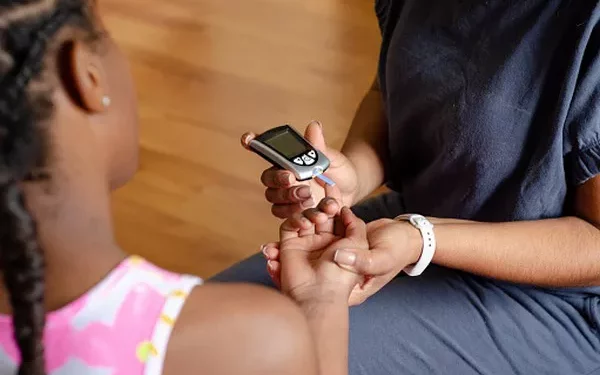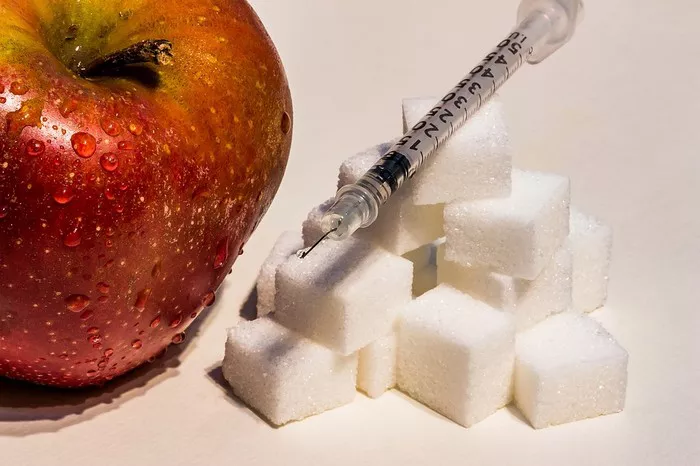Diabetes, a chronic condition characterized by elevated levels of blood glucose, affects millions of people worldwide. Effective management and monitoring are crucial to prevent complications associated with the disease. Among the various metrics used to monitor diabetes, Hemoglobin A1c (HbA1c) and blood glucose levels are fundamental. Understanding the differences between these two metrics is essential for both patients and healthcare providers in managing diabetes effectively.
What is Hemoglobin A1c?
Hemoglobin A1c, commonly referred to as HbA1c or simply A1c, is a blood test that provides an average level of blood glucose over the past two to three months. It measures the percentage of hemoglobin, the oxygen-carrying protein in red blood cells, that is coated with glucose. The higher the blood glucose levels over the preceding months, the higher the HbA1c value will be.
The Science Behind HbA1c
Hemoglobin, found in red blood cells, binds with glucose in the bloodstream. This binding process, known as glycation, occurs continuously throughout the lifespan of a red blood cell, which is approximately 120 days. The HbA1c test measures the proportion of glycated hemoglobin in the blood, giving a picture of the average blood glucose levels over the past two to three months.
Importance of HbA1c in Diabetes Management
HbA1c is a critical tool in diabetes management for several reasons:
- Long-term Monitoring: Unlike daily blood glucose tests, which reflect short-term glucose levels, HbA1c provides a long-term view of glucose control, helping to assess the effectiveness of diabetes management strategies over time.
- Predicting Complications: Studies have shown a strong correlation between high HbA1c levels and the risk of diabetes-related complications, such as cardiovascular disease, neuropathy, nephropathy, and retinopathy.
- Treatment Adjustments: Regular HbA1c testing helps healthcare providers make informed decisions about adjusting medications, lifestyle changes, and other interventions to improve glucose control.
Interpreting HbA1c Results
HbA1c results are reported as a percentage. The American Diabetes Association (ADA) provides the following guidelines for interpreting HbA1c levels:
- Normal: Below 5.7%
- Prediabetes: 5.7% to 6.4%
- Diabetes: 6.5% or higher
For individuals with diabetes, the ADA recommends maintaining an HbA1c level below 7% to reduce the risk of complications. However, target levels may vary based on individual circumstances, such as age, duration of diabetes, and the presence of other health conditions.
Limitations of HbA1c
Despite its importance, HbA1c testing has limitations:
- Variability: Factors such as anemia, hemoglobin variants, and certain medical conditions can affect HbA1c results, leading to inaccurate readings.
- Delay in Reflecting Changes: HbA1c reflects average glucose levels over two to three months, so it may not capture recent changes in glucose control.
- Does Not Show Daily Fluctuations: HbA1c provides an average, which means it does not reflect daily glucose variability or hypoglycemic episodes.
What is Blood Glucose?
Blood glucose, or blood sugar, is the main sugar found in the bloodstream. It comes from the food we eat and is the body’s primary source of energy. For individuals with diabetes, monitoring blood glucose levels is a crucial part of managing the condition.
Types of Blood Glucose Tests
Several types of blood glucose tests are used to monitor and manage diabetes:
- Fasting Blood Glucose (FBG): Measures blood glucose after an individual has not eaten for at least eight hours. It is often used to diagnose diabetes and prediabetes.
- Random Blood Glucose Test: Measures blood glucose at any time of day, regardless of when the individual last ate. It is used to diagnose diabetes when symptoms are present.
- Oral Glucose Tolerance Test (OGTT): Measures blood glucose before and after consuming a glucose-rich drink. It is used to diagnose diabetes and gestational diabetes.
- Self-Monitoring of Blood Glucose (SMBG): Individuals with diabetes use portable glucose meters to check their blood glucose levels at home. This helps in daily management and decision-making.
Importance of Blood Glucose Monitoring
Monitoring blood glucose levels is vital for several reasons:
- Immediate Feedback: Blood glucose tests provide real-time information, allowing individuals to make immediate adjustments to their diet, exercise, and medication.
- Preventing Hyperglycemia and Hypoglycemia: Regular monitoring helps prevent dangerous extremes in blood glucose levels, which can lead to complications such as diabetic ketoacidosis (DKA) or severe hypoglycemia.
- Tailoring Treatment: Frequent testing helps healthcare providers and patients tailor treatment plans to achieve optimal glucose control.
Interpreting Blood Glucose Results
Blood glucose levels are measured in milligrams per deciliter (mg/dL) in the United States and millimoles per liter (mmol/L) in many other countries. The ADA provides the following guidelines for interpreting blood glucose levels:
Fasting Blood Glucose:
- Normal: Below 100 mg/dL (5.6 mmol/L)
- Prediabetes: 100-125 mg/dL (5.6-6.9 mmol/L)
- Diabetes: 126 mg/dL (7.0 mmol/L) or higher
Random Blood Glucose:
- Diabetes: 200 mg/dL (11.1 mmol/L) or higher, along with symptoms of diabetes
Comparing HbA1c and Blood Glucose
While both HbA1c and blood glucose tests are essential in diabetes management, they serve different purposes and provide different information.
Duration of Monitoring
- HbA1c: Reflects average blood glucose levels over the past two to three months. It is a long-term measure of glucose control.
- Blood Glucose: Provides a snapshot of blood glucose levels at a specific moment in time. It is a short-term measure and can vary throughout the day based on factors such as meals, exercise, and medication.
Frequency of Testing
- HbA1c: Typically measured every three to six months during routine diabetes check-ups.
- Blood Glucose: Often measured multiple times a day, especially for individuals using insulin or those with unstable glucose levels.
Information Provided
- HbA1c: Offers an overall picture of glucose control over an extended period. It does not show daily fluctuations or immediate changes in blood glucose levels.
- Blood Glucose: Provides immediate feedback on current glucose levels, allowing for real-time adjustments to diabetes management.
Predicting Complications
- HbA1c: Strongly correlated with the risk of long-term complications, making it a valuable tool for predicting and preventing diabetes-related issues.
- Blood Glucose: While important for daily management, single blood glucose readings are less predictive of long-term complications than HbA1c.
Limitations
- HbA1c: Can be affected by conditions that alter red blood cell turnover or hemoglobin variants. It does not capture short-term fluctuations or recent changes in glucose control.
- Blood Glucose: Requires frequent testing and can be influenced by factors such as stress, illness, and physical activity. It provides a limited view of overall glucose control.
Combining HbA1c and Blood Glucose Monitoring
Effective diabetes management often involves using both HbA1c and blood glucose monitoring. Combining these approaches offers a comprehensive view of glucose control and helps in making informed decisions about treatment.
Case Study: A Practical Example
Consider a patient with type 1 diabetes who has an HbA1c of 8.0%, indicating suboptimal long-term glucose control. This patient also performs SMBG several times a day. By reviewing both HbA1c and daily blood glucose readings, the healthcare provider can identify patterns and trends, such as frequent post-meal spikes or nighttime hypoglycemia, and adjust the treatment plan accordingly.
Advancements in Diabetes Monitoring
Recent advancements in diabetes technology have improved the accuracy and convenience of glucose monitoring:
- Continuous Glucose Monitoring (CGM): CGM systems provide real-time glucose readings throughout the day and night, offering a more detailed view of glucose trends and patterns. This technology helps in detecting and preventing hypoglycemia and hyperglycemia.
- Flash Glucose Monitoring: Similar to CGM, flash glucose monitoring systems provide continuous glucose readings but require the user to scan a sensor to obtain the data. This method is less invasive than traditional SMBG and offers valuable insights into glucose control.
See also: What is CSII in Diabetes?
Conclusion
Understanding the differences between HbA1c and blood glucose is crucial for effective diabetes management. While HbA1c provides a long-term view of glucose control and is predictive of complications, blood glucose monitoring offers immediate feedback and helps in daily decision-making. By combining both approaches, individuals with diabetes and their healthcare providers can achieve better glucose control, reduce the risk of complications, and improve overall quality of life.
Related topics:
Diabetic Socks VS Regular Socks What’s the Difference


























